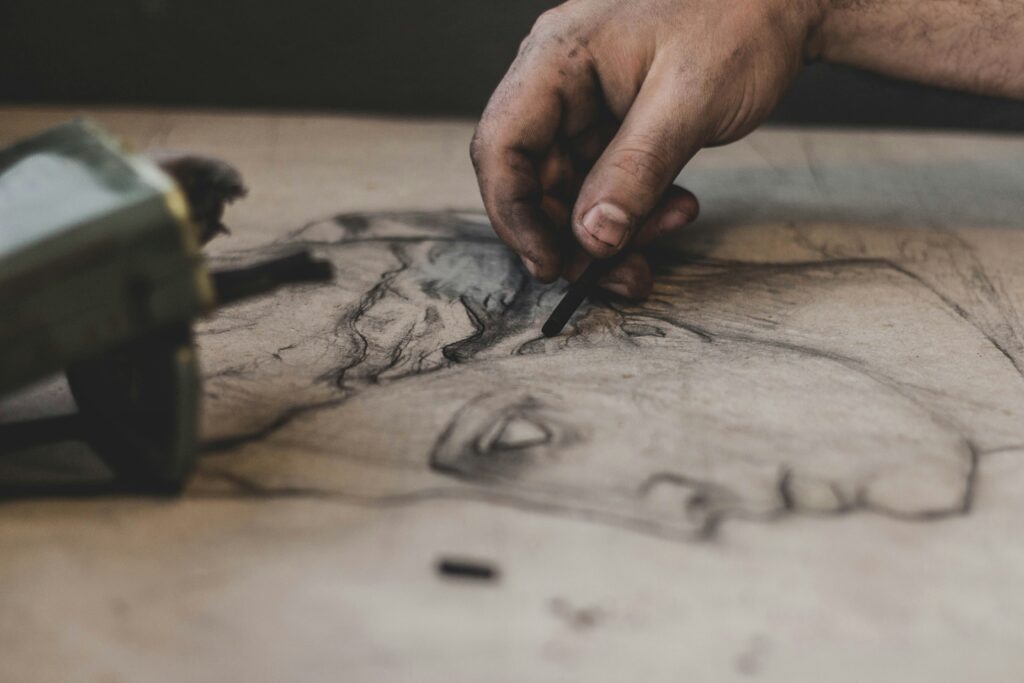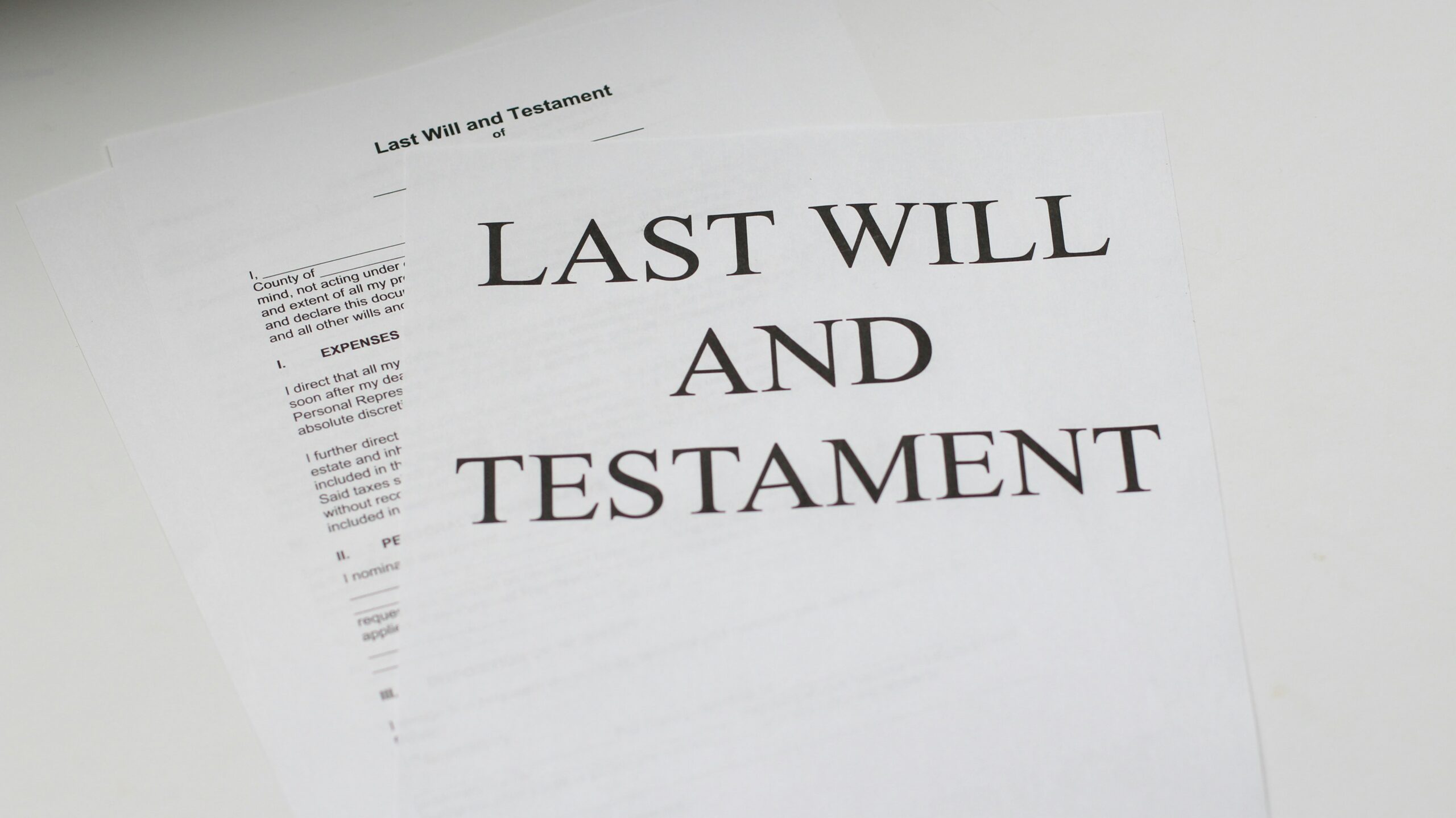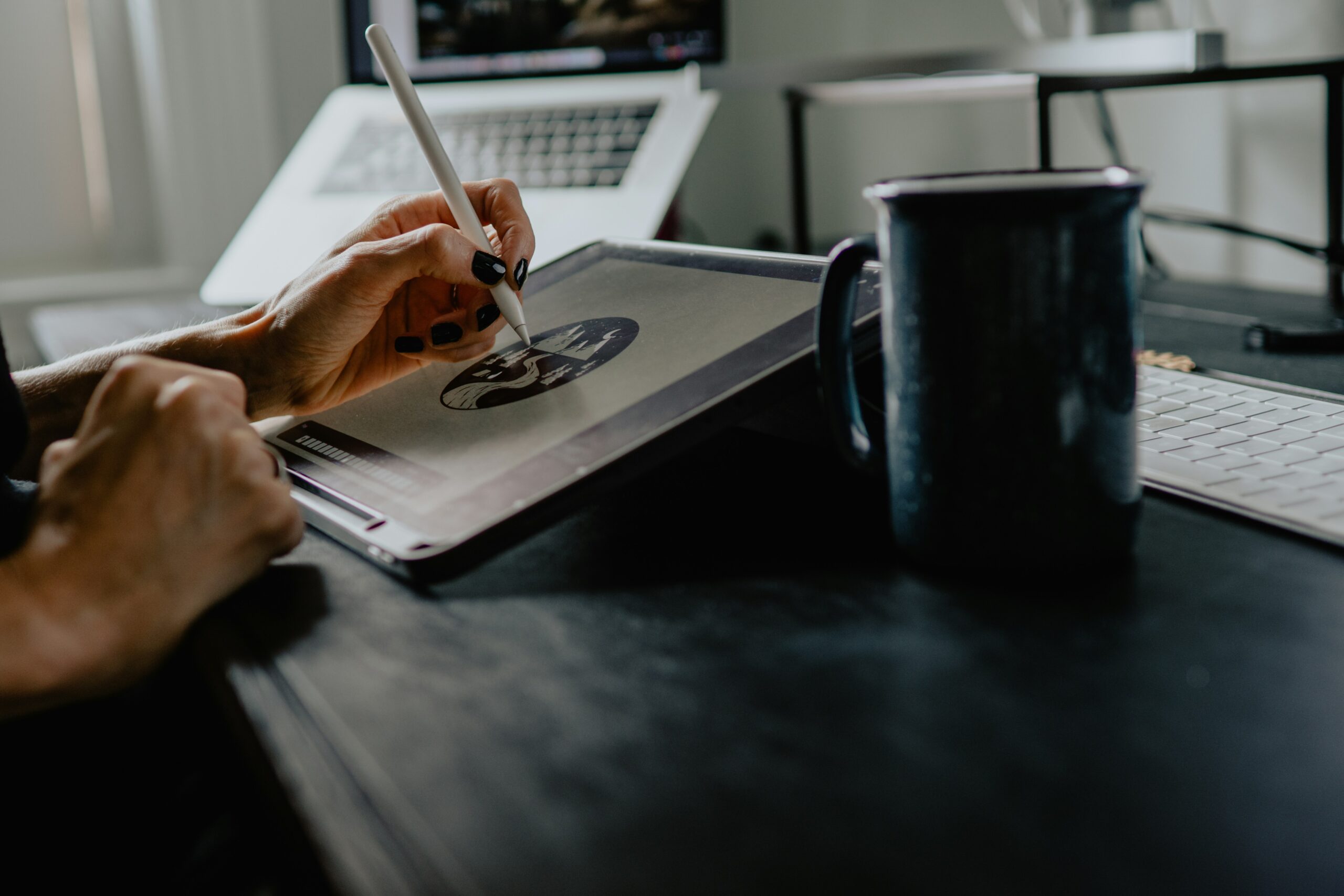PRIZE REVIEW: Brisbane Portrait Prize

This month, Arts Law has reviewed the terms and conditions of the Brisbane Portrait Prize (BPP). You can read the details of the competition here.
What was the rating?

Arts Law has awarded the competition 3.5/5 stars.
How did Arts Law help?
Arts Law contacted the Organiser of the Brisbane Portrait Prize, who noted that with entries already open and the deadline approaching, the Organiser would not be making any changes to this year’s terms. However, the Organiser did say they perform an annual review of their terms and would consider the substance of our review at that time.
How artist-friendly is this competition?
Overall, the competition’s terms are moderately artist-friendly, but could benefit from some improvements.
A total of $89,000 worth of prizes are awarded to winners, with an overall winner in the acquisitive Lord Mayor’s prize taking home $50,000. These offer good financial and profile-raising opportunities for entrants.
The winners for each prize (excluding the People’s Choice Prize, Packer’s Prize, Emerging Artists Awards and Next Gen Prize) will be judged by an independent person appointed by BPP. The winner of the People’s Choice Prize will be selected by members of the public using criteria and methods determined by BPP. The winner of the Packer’s Prize will be selected by BPP volunteers who receive, unpack, and hang the artworks, using criteria and methods determined by BPP. The winner of the Emerging Artist and Next Gen Prize will be selected by the BPP Board, at the Board’s discretion.
For transparency it would be ideal if the judges, where applicable, could be identified.
A non-refundable $65 entry fee is applicable per entry for all Prizes other than the Next Gen Prize. A non-refundable $25 entry fee per entry is applicable for the Next Gen Prize.
The competition accepts artworks created with the assistance of generative artificial intelligence (Gen AI). It is a requirement for entrants to provide a brief description of the AI tools and methodologies employed in the creation process and BPP reserves the right to publish this information alongside the exhibited artwork.
How do the copyright terms stack up?
| What is copyright? | Copyright is a bundle of rights that protect literary, artistic, musical and dramatic works (as well as films and sound recordings). These rights allow the owner of copyright to control the ways that a work is used. If you want to learn more, you can read Arts Law’s Information Sheet on Copyright here. |
The terms expressly state that the artwork that wins the Lord Mayor’s Prize will become the property of the Brisbane City Council but does not affect copyright in the artwork. For artworks other than the winner of the Lord Mayor’s Prize, there is no express term stating whether copyright remains with the entrant, though this term is implied.Artists should be warned that if their artwork is a finalist or selected for the Salon des Refuses, the entrant grants the organisers a non-exclusive, sub-licensable, worldwide, perpetual, and irrevocable licence to exercise copyright in your artwork for the purposes of:
- Administering
- Promoting; and
- Providing information about the competition
It is good to see that this licence is a non-exclusive licence which means that the entrant retains the right to commercialise their work in other ways. It would be helpful if the Organiser outlined how the work may be used in their promotion of the competition. For example, they may say that promotions may occur online via social media channels, through brochures or posters. It would also be helpful if the Organiser outlined who any potential sublicensees may be. Although it is good to see that the licence is confined to purposes for promoting the competition, it would be ideal to include an end date. Particularly when there is no licence fee paid, we would have liked to see a clear and appropriate duration period for the licence, being only as long as is required for such promotions.
The entrant also acknowledges that it would be impractical to prevent the public from taking photographs of their artwork and that they will not hold the Organiser responsible for photographs taken of their artwork. This term is important as is may limit the extent to which an entrant may exercise and protect their exclusive right to communicate their artwork to the public. This exclusive right includes, for instance, taking photographs of artworks and publishing them to online social media platforms. The practical implications of this term may mean that an entrant will be unable to hold the Organiser responsible as either joint tortfeasor or for authorisation of infringement.
The terms state exhibitions for the finalists and artworks selected for the Salon des Refuses may be via online and virtual channels. Entrants should note that this may increase the change of third parties infringing entrants’ copyright. This is especially so as it would be difficult to determine who has accessed or viewed their artworks via these online and virtual channels.
Does the competition respect moral rights?
| What are moral rights? | Creators have moral rights when their work is used (i) to attribution, (ii) against false attribution, and (iii) to integrity, which means not having their work treated in a derogatory way. For more information, you can read Arts Law’s Information Sheet on Moral Rights here. |
The terms expressly state that the entrants retain all moral rights in their artworks. Nevertheless, entrant should know that:
- This term provides no further protection than is already afforded under the Copyright Act.
- As the finalists grant a licence for the purpose of promoting the competition, entrants may have deemed to have consented to a range of acts by the Organiser that may otherwise constitute and infringement of their moral rights.
- The organisers in any event, may rely on the defence of reasonableness relating to any treatment of an entrant’s artwork that would otherwise be deemed to constitute derogatory treatment. Entrants can read the Arts Law’s Information Sheet on Moral Rights for more information on the scope of this defence.
What about Indigenous Cultural and Intellectual Property?
| What is ICIP? | ICIP is a broad term that covers all of the rights that Indigenous people have, and want to have, to protect their traditional arts and culture (including writing, music, performances, paintings, languages, sacred sites, stories passed down orally, and other records of heritage). If you want to learn more, you can read Arts Law’s Information Sheet on ICIP here. |
There is no provision for ICIP notices if any works displayed contain ICIP. This may not be relevant to some or even many of the artworks. But in case it is, it is important to add a term regarding the gallery’s responsibility to accompany any display of the work itself or images of the work with a notice indicating who owns the ICIP in the work.
Ideally the terms of the Prize should also require the photographer/artist to inform the Organiser if there is any ICIP in the artwork and if so any display of the photograph/artwork or of an image of the photograph/artwork by the Shire would be accompanied by an ICIP notice which would say acknowledge the inclusion of traditional ritual knowledge of a community, the consent from the custodians of that community, and that dealing with any part of the work for any purpose that has not been authorised by the custodians is a serious breach of the customary laws of that community. Contact details for enquiries regarding permitted uses of the work can also be included in the notice.
The Organiser has noted that they are undergoing a community and industry consultation process which will, they hope, lead to incorporation of ICIP protection in the 2025 terms. We look forward to seeing if this occurs in future iterations of the Prize.
What about transport, risk and insurance for the artworks?
The Artist (not the Organiser) must arrange insurance for the artwork during transportation and the exhibition. The Artist (not the Organiser) is responsible for freighting costs. This may create a barrier to entry for the artist (in addition to the entry fee). National Association for the Visual Arts ’(NAVA’s) Code of Conduct recommends that organisers can improve equitable access for artists by paying for or sharing in transportation costs with the artist and paying for artists to be insured while in transit and for the duration of the exhibition, for damage and theft. It would be best practice for the Organiser to offer insurance cover to protect the artwork while it is in the Organiser’s possession and control.
The Organiser did indicate in an email response to us that all works are insured for the duration of the exhibition. This is encouraging and is to be commended. However, it is not clear to us that this information was provided to entrants; the Terms of the competition still place the responsibility for insurance on entrants.
Other issues
- The terms do not set out the judging criteria for finalists or the winner of the prize. They also do not state who will be part of the initial selection panel for finalists, nor who the judges will be for the final winner. For transparency, it would be best if all of this information was available to entrants in advance. The Organiser noted that as the judging panel changes each year and is announced soon after entries open on social media. Even so, greater clarity on the judging process itself and the criteria for successful entries helps artists make informed decisions about their entries and prospects for success with the Prize.
- The competition accepts artworks completed in part by Gen AI. The terms are unclear as to the extent to which artists are permitted to use Gen AI. Entrants should note that copyright law in Australia, as elsewhere, requires human ‘authorship’ for copyright to subsist in categories of material typically protected (e.g. visual artworks). Around the world, the extent to which Gen AI systems are deployed as tools by artists, and the extent to which they are autonomously generating material, remains contested for copyright protection purposes. Artists should also note that they may be infringing other people’s copyright if they us images attained from the internet for their training data without the permission of the rights holder/s.
- All entrants warrant that they have not infringed other people’s rights. This means that entrants may be liable to compensate the Organisers for any actions that may be brought against them for infringement of a third party’ copyright. Given the uncertainty of the law regarding copyright infringement and the use of Gen AI, artists should exercise additional vigilance in ensuring they respect the rights of other rights holders when submitting artworks for the competition.
- The winner of the Lord Mayor’s Prize will be acquired by the Brisbane City Council. This means the artist will no longer own the physical artwork. Entrants may therefore wish to consider the value of their artwork and whether it may be greater than the $50,000 prize money before entering.
- As all artworks must remain in the exhibition and cannot be removed, entrants may wish to make copies of their artworks, such as digital scans, to ensure that they can continue to exercise the exclusive rights that subsists in their artworks. These include making copies, communicating, or publishing the artwork.
What could they have done better?
- Take responsibility for damage to artworks and ensuring that insurance of artworks is properly communicated to entrants and incorporated in the terms.
- Recognition of ICIP.
- Include a term limiting the copyright licence to a limited period or a royalty paid if artworks are used on consecutive years.
- Make the judging process more transparent.
What is the Brisbane Portrait Prize about?
The Organiser describes the competition on its website as a celebration of Brisbane portrait artists and their sitters.
For all prizes except the Next Gen Prize, entries are open to individuals aged 18 years of older, with a connection to Brisbane. The sitter must also have a connection to Brisbane. For the Next Gen Prize entries are open to individuals aged 18 years or younger.
What prizes are on offer in the Brisbane Portrait Prize?
There are nine different prizes on offer:
- Lord Mayor’s Prize and overall winner – $50,000 (acquisitive)
- The Courier-Mail People’s Choice Award – $7,500 (non-acquisitive)
- Accenture Digital Prize – $10,000 (non-acquisitive)
- Sylvia Jones Prize for Women Artists – $5,000 (non-acquisitive)
- Performing Arts and Music Award – $7,500 (non-acquisitive)
- Packer’s Prize – $5,000 (non-acquisitive)
- Metro Arts Experimental Prize – Two-week exhibition plus $1,000 (non-acquisitive)
- Emerging Artists Awards – 2 prizes, each a $1,000 Oxlades voucher (non-acquisitive)
- Next Gen Prize – $2,000 (non-acquisitive)
About
Arts Law regularly reviews the terms and conditions of competitions and rates them out of five stars. Our review looks broadly at the terms and conditions of a competition. In particular, we look closely at how a competition deals with an entrant’s copyright and moral rights, and consider this in light of the prize. Entrants should always take into account the possible profile-raising which may result from being a finalist or winner.
By accepting the terms and conditions of a competition, entrants should be aware that they may be entering a legally binding contract.
For more information, see our free information sheet on competition conditions. Artists are welcome to contact Arts Law for legal advice on the terms of a competition. We also invite competition organisers to contact Arts Law for best practice assistance to make their terms and conditions fairer for artists.
Please note: Prior to February 2018, Arts Law’s rated out of five stars only the terms of a competition which dealt with copyright and moral rights. Arts Law’s competition reviews are now more holistic, such that our rating out of five stars now reflects a broad review of all the terms and conditions of the competition. For more information see our website.
Further Information
Please email us at [email protected] to tell us about any competitions or prizes you think we should check.
See more about Arts Law’s campaign to improve competition terms and conditions in the Prizes and Competitions section.




